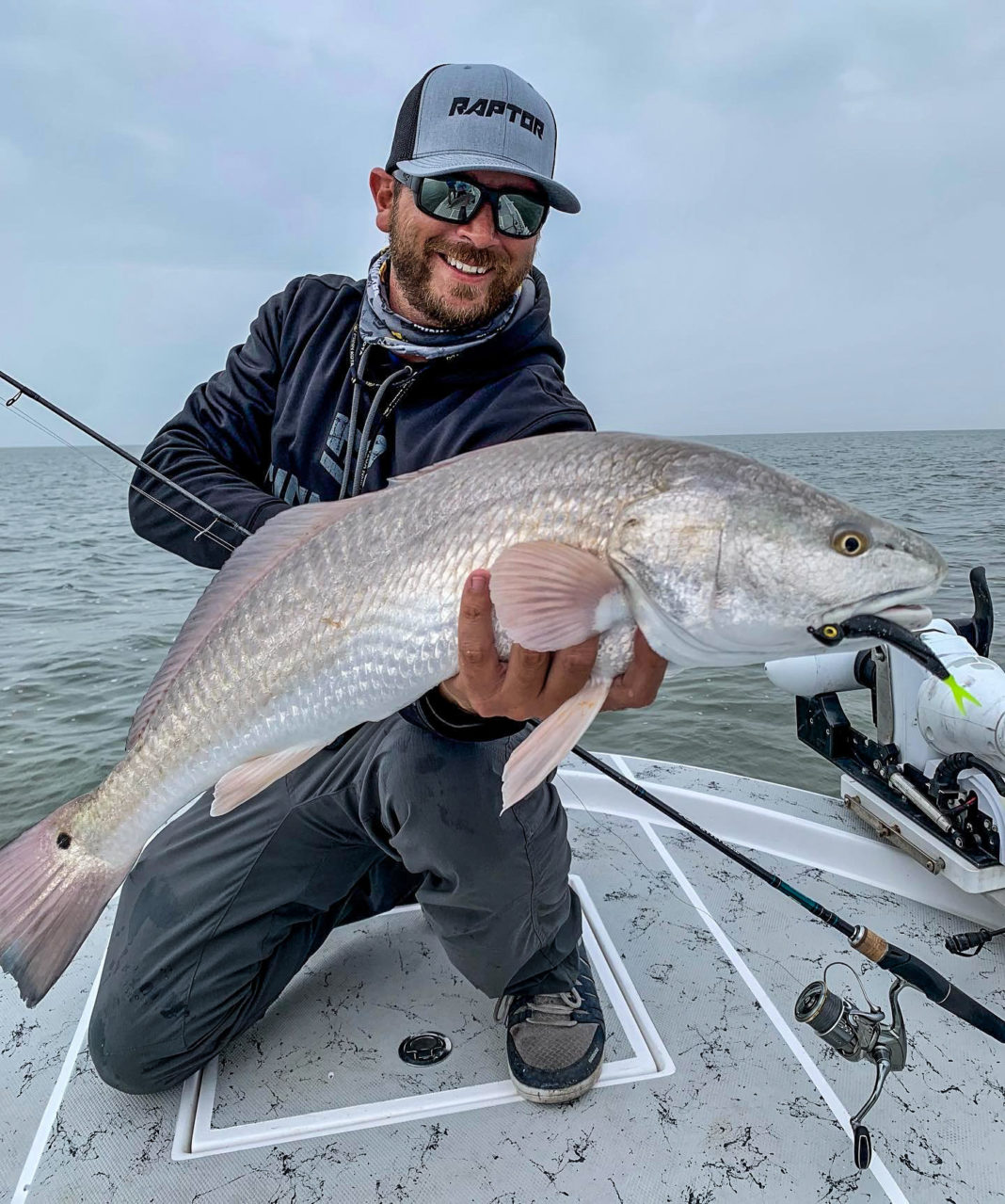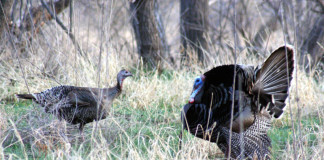Spring on the Texas Gulf Coast is a time of plenty for hunters and anglers alike.
Thanks to a temperate climate that other portions of the state lack, March, April and into May provide better weather conditions conducive to pursuing numerous fish species from trout, redfish and flounder in the salt to largemouth bass, catfish and crappie in freshwater reservoirs. Throw in what can be exceptional gobbler hunting as well as the myriad exotic species creeping around and you’ve got a great mix in both worlds of cast and blast.
Here’s a rundown of spring outdoor pursuits in South Texas that you can’t miss out on:
Get salty
The obvious draw of the coast is the hundreds of thousands of acres of saltwater habitat home to diverse fish populations that can be caught using dozens of means and methods.
The fishing pressure in the paradise that is Rockport has never been higher, but nearby Aransas Bay and Copano Bay have long been the destinations of choice for avid anglers. The shallows of Aransas Bay are prime for wade fishing, allowing anglers to get close to tailing redfish, hungry schools of speckled trout and the occasional but much welcome flatfish, which surprisingly will rise to hit a number of baits drawn across sandy “potholes” dotted with a variety of sea grasses.
You can’t overlook using natural baits for success, and local bait shacks carry live croaker and shrimp for the angler hoping to increase their chances. The prime way to enjoy a day of catching – regardless of the species – is to use shrimp and a popping cork, which stimulates game fish activity and has been used for decades.
The area from south of Corpus Christi to past Baffin Bay is an ecosystem suited to speckled trout — and big ones, too. If you had to pick one area to focus on, whether you prefer to fish from a boat or wade, the top portion of the “Mother Lagoon” is your best bet.
The channels of the Intracoastal Waterway often hold fish, as the critters move deeper when temperatures dip and come up shallower onto the flats when it gets warmer. Live bait remains a staple of trout fishing, and catching your own can be done with a cast net, simply by patrolling shorelines early in the morning in search of roving mullet or piggy perch.
You’re also in luck if you prefer artificials, including spoons and paddletail soft plastics.
Talk turkey
The area south of San Antonio up to and including saltwater bay systems and into the heart of the brush country is the epicenter of some of the best spring turkey hunting in the country. The general spring gobbler season starts two weeks earlier in South Texas counties than in the northern zone, an aspect of turkey hunting biologists chalk up to the birds farther south hitting peak gobbling activity sooner due to the climate and typical conditions in the spring.
The good part about Texas turkey hunting is we’ve got the highest population of the Rio Grande subspecies – roughly half a million birds when range conditions are good and provided adequate nesting conditions for more birds. According to the most recent Texas Parks and Wildlife Department small game harvest estimates, about 65,000 turkey hunters killed about 25,000 birds last season overall, which is a mere fraction of the overall population.
If you’re able to get in on a turkey hunt, plan to put in time scouting – and if you’re lucky and set up a hunt with a guide or outfitter – they usually will have already put in the hours to find obvious roost and travel sites. It should be noted that overall turkey hunter success rests at about 40% during the past decade, according to Texas Parks and Wildlife Department studies and hunter data, though having boots on the ground can swing the odds much more in your favor.
Go exotic
Deer season gets the attention and accolades in South Texas but there are other species that can be pursued all year, especially in the spring as things warm up. The price of hunting certainly has gone up in recent years but all of these and even more can be had for a big game hunt right now: nilgai, axis, blackbuck, plenty of other African species that are thriving here in Texas, and even wild hogs and the diminutive javelina, which isn’t related in any way to the feral pigs that are destroying the native landscape.
Each of those hooved species, with the exception of javelina, has no bag limit. This year’s javelina frameworks in the southern zone that spans south and west of San Antonio run through the end of August with a bag limit of two per license year and opens back up Sept. 1 anew. The “skunk pig” or collared peccary can only be found in Texas and parts of New Mexico and Arizona, and though many folks may turn their nose up at them, they can offer an exciting hunt. They also are fit to eat even though they get a bad rap for having a large and pungent scent gland on their back.
If you had to specifically target one species, which typically offers less of a hit on the pocketbook, go after feral hogs, which can be eradicated using multiple means and methods and is needed to help even in some small way to keep that booming population from doing even more damage.
Stay fresh
While saltwater angling gets the headlines, don’t overlook the freshwater fishing opportunities across South Texas and down to the Mexican border. The San Antonio reservoirs – Braunig and Calaveras – are excellent locales to catch huge redfish that were stocked by state biologists in addition to stocked catfish.
Farther south, Choke Canyon Reservoir near Three Rivers is noted as a great largemouth bass fishery supplemented by stocking efforts, including the offspring of fish that were entered into the ShareLunker breeding program. Lake Corpus Christi, near Mathis, also is a great place to catch limits of channel and blue catfish, in addition to bass, crappie, white bass and big alligator gar. Coleto Creek Reservoir near Victoria is another lunker largemouth lair, in addition to having solid numbers of crappie, catfish and white bass.
Much farther south is massive Falcon International Reservoir, which at one time was considered the best largemouth fishery in North America and has become known now as much for huge alligator gar. Falcon sits both inside the U.S. and Mexico and as such features vastly different regulations depending on which side you’re fishing, though a license is still needed if you’re fishing the Mexican side. In all these locales, a guide can help lessen the learning curve, and in the case of Falcon, it’s advised for safety reasons.
Be crabby
Fall and early winter typically can feature the best conditions for racking up big counts of blue crabs and stone crabs. However, spring can be pretty good, too, and bringing home a mess of tasty crustaceans can be done using simple gear.
Crabs may be harvested for food or bait with a valid fishing license and a saltwater fishing stamp endorsement, but those taken for personal use may not be sold. There are no public waters, seasons or times closed to crab harvesting other than during abandoned crab trap removal program dates in February.
There is no daily bag or possession limit for blue crabs and stone crabs. The legal size at which a blue crab may be harvested is when it measures 5 inches across the widest point of its body, from tip to tip of its spines. A legal stone crab is defined as one with at least a 2½-inch claw, measured from the tip of the claw to the first joint behind the immovable claw. The larger claw is the only portion that may be retained and you must return the body of the crab to where it was caught. The crab’s claw will regenerate, typically within a year, according to the Texas Parks and Wildlife Department.
Texas spring turkey hunting seasons
The spring Rio Grande turkey framework in “northern” counties runs from March 29 to May 11, 2025, while the season in southern counties is from March 15 to April 27, 2025. The north zone youth-only season is March 22-23 and May 17-18, 2025. The youth-only dates in the south zone are March 8-9 and May 3-4, 2025.
There also is a one-turkey bag limit season than runs April 1-30, 2025, in the following counties: Bastrop, Caldwell, Colorado, Fayette, Jackson, Lavaca, Lee, Matagorda, Milam and Wharton. Birds killed in those counties must be reported to TPWD under mandatory requirements.
The Eastern turkey season in East Texas will run April 22 to May 14, 2025. Hunters are required to report harvest of eastern turkeys electronically to TPWD within 24 hours of harvest. Reports in mandatory counties can be made through the TPWD My Texas Hunt Harvest App or online from the TPWD website.
In addition to a Texas hunting license, an upland game bird endorsement is required to hunt turkeys.
Crabbing along Texas coast geared toward simplicity, fun, food
Turkey hunting in Texas brings need to know tips, tactics, regulations
Texas spring hunting pursuits bring out critters that bite back



















